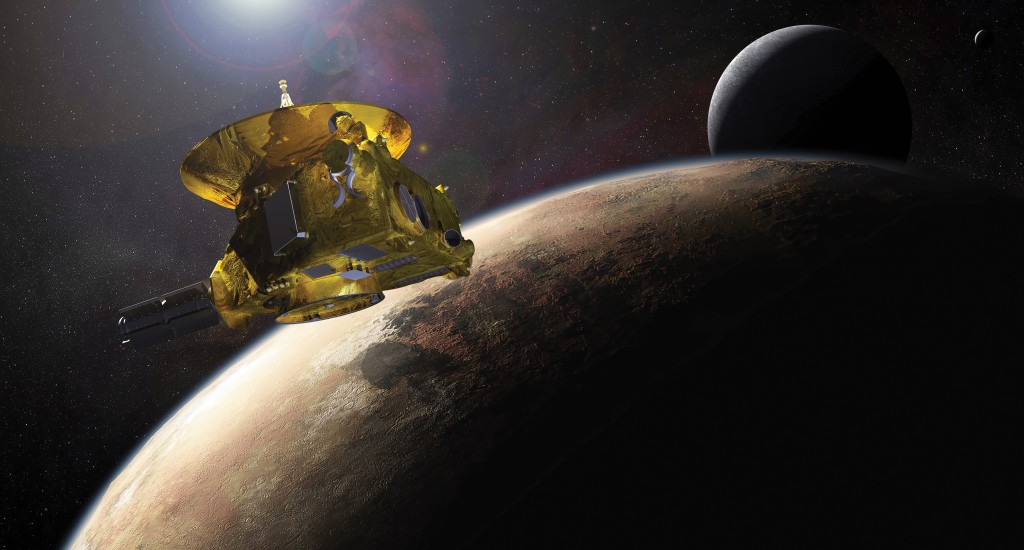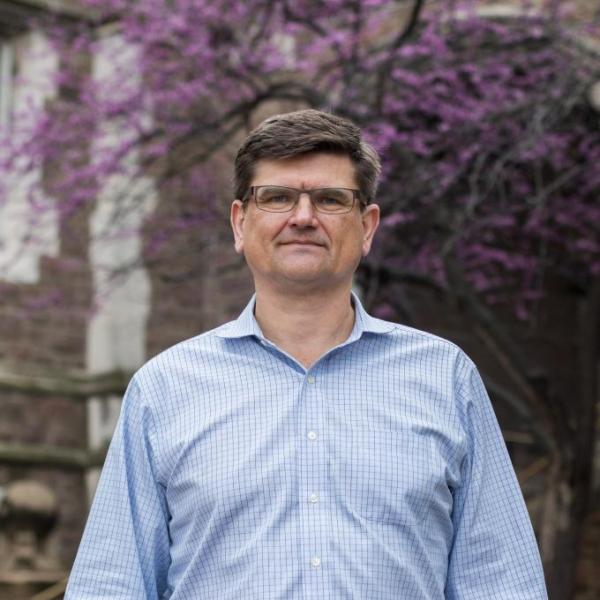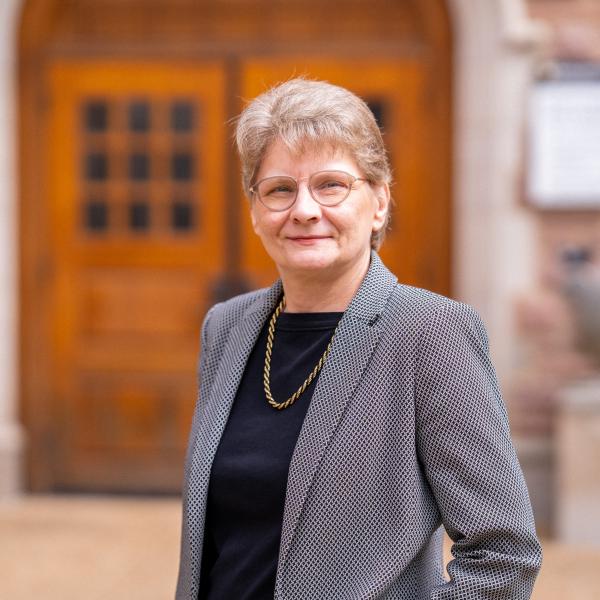WashU is a leading partner in NASA research, from the first Moon missions to future journeys probing the distant reaches of the cosmos.
When President Dwight Eisenhower created NASA 65 years ago this summer, he ignited an era of unprecedented space exploration and laid the groundwork for one of WashU’s most enduring research relationships.
From the Apollo Moon missions of the 1960s to future missions that will explore the galaxy, WashU faculty and researchers continue to play key roles in NASA missions. “Over the decades, space science has been a jewel in WashU’s crown, and NASA has enjoyed a tremendous return on its investment in the university,” said Bradley Jolliff, director of the McDonnell Center for the Space Sciences.
That investment has been substantial: Arts & Sciences researchers have received more than $71 million in grant funding from NASA for 131 projects over the past 10 years.
Many graduate students and affiliated researchers have also gone on to work for the space agency, Jolliff said. “There have been times when you could walk down the hall in the planetary sciences division at NASA and a third of the people you meet would have a WashU relationship,” he said.
Spanning galaxies and disciplines
WashU’s NASA-funded projects cover the cosmos with an array of academic disciplines, including chemistry, physics, and geology. They also span a wide range of objects, from the Earth’s Moon and planets of the inner solar system to the high-energy phenomena associated with distant black holes.

William McKinnon, professor of Earth, environmental, and planetary sciences (EEPS), has played a key role in NASA missions and advised the agency on priorities for future exploration. McKinnon was among the lead scientists for the New Horizons mission — the first to visit the Pluto-Charon system — and is currently working on upcoming missions to explore Europa, the large ocean-bearing icy moon of Jupiter. For his body of work, McKinnon was awarded the 2023 Kuiper Prize by the Division for Planetary Sciences of the American Astronomical Society and elected to the National Academy of Sciences.
Alian Wang, a research professor of Earth, environmental, and planetary sciences, uses spectroscopy and other approaches to study the chemical and mineral composition of the Moon, Mars, and Venus. “I’ve been very fortunate to receive NASA support for the last 30 years,” she said. “The agency has been indispensable for my research and career.”
Wang is currently the principal investigator for NASA’s WRANGL3R project, a two-year effort to design a miniature laser-based spectrometer that could be deployed on a lunar rover for the Artemis III mission in 2025. The mission aims to map the distribution of water-ice or water-bearing minerals at the Moon’s south pole. "Water on the Moon is a very hot topic for lunar science,” Wang said. “We’re proud that the WRANGL3R project will contribute in that field.”
In the Department of Physics, chair and professor Henric Krawczynski is leading a collaboration of more than 50 scientists from three countries — the United States, Japan, and Sweden — to launch XL-Calibur, a balloon-based telescope that will observe radiation coming from distant black holes to better understand how they grow and emit X-rays.

Krawczynski has received sustained NASA funding since 2004, including nearly $6.5 million in grants coming to WashU in the last decade. “That support has allowed me to build a research team, create gamma-ray detectors and other cutting-edge technologies, develop theoretical models of cosmic phenomena, and launch my own missions,” he said.
NASA uses a double-blind system to evaluate grant proposals, Krawczynski said, an approach that promotes the agency’s overall goals of diversity, equity, and inclusion by requiring all proposals to be judged solely on their merits — not by the names of the scientists or their institutions. "I appreciate that NASA is taking active steps towards making science more inclusive," he said.
James Buckley, professor of physics, has worked closely with NASA over the years in his quest to build and deploy gamma-ray telescopes to better understand the fundamental nature of the universe. Buckley is the lead investigator in a multinational project, ADAPT, that will launch a gamma-ray detector on a scientific balloon scheduled to depart from Antarctica in 2024. The project — which also includes Brian Rauch, research associate professor of physics; Richard Bose, senior research engineer in physics; Roger Chamberlain and Jeremy Buhler of the McKelvey School of Engineering; physics PhD student Jonah Hoffman and computer science PhD student Marion Sudvarg; and other collaborators at institutions in the U.S., Italy, and Germany — will detect gamma radiation and other cosmic rays to gain insights into the nature of dark matter and the physics of neutron stars. Buckley adds that the project wouldn’t be possible without the work of Izabella Pastrana, research engineer in physics, as well as technicians/ instrumentation specialists Dana Braun and Garry Simburger.
Rauch has partnerships of his own with NASA, most recently as the principal investigator of the Trans-Iron Galactic Element Recorder for the International Space Station (TIGERISS), a mission to detect cosmic rays made of nuclei of heavy elements ranging from boron to lead. The measurements will help explain how these elements are created in distant supernovae and the collisions of far-off neutron stars.
Other WashU researchers work with NASA to study objects closer to home. As the lead investigator of the multi-institutional ICE Five-O group, Jeffrey Gillis-Davis, research professor of physics, combines experiments, sample analysis, and remote sensing to study the abundance and origins of water and other volatile compounds on the surface of the Moon and asteroids. The work could help explain the origin of water on Earth. Further, knowing the abundance and location of extraterrestrial ice could allow astronauts to mine it as a resource — for drinking water, breathable oxygen, and rocket fuel —on future missions to the Moon and other parts of the solar system.
Early pioneers of planetary science
WashU’s connection to space traces back to James S. McDonnell, the aviation and space pioneer who founded the McDonnell Aircraft Corporation in St. Louis in 1939. The company would go on to produce the space capsules for the Mercury and Gemini missions to the Moon in the 1960s. McDonnell served as a WashU trustee and board chair in the mid-1960s and, with the full support of Chancellor William Danforth, established the McDonnell Center for the Space Sciences in 1975. He remained an active WashU supporter and advisor until his death in 1980.

Robert Walker, a pioneer in his own right, joined the WashU faculty in 1966 as the first McDonnell Professor of Physics and director of the Laboratory for Space Sciences. Walker, who died in 2005, played a crucial role in the collection, return, and analysis of lunar rocks from the Apollo missions. That work kicked off decades of lunar and other extraterrestrial sample analysis that continues to this day in the labs of Ryan Ogliore, associate professor of physics; Alex Meshik, research professor of physics; Olga Pravdivtseva, research associate professor of physics; Jolliff, the Scott Rudolph Professor of Earth, environmental, and planetary sciences; Kun Wang, associate professor of Earth, environmental, and planetary sciences; and Rita Parai, assistant professor of Earth, environmental, and planetary sciences.
Another key figure in WashU space research is Raymond Arvidson, the James S. McDonnell Distinguished University Professor Emeritus. Arvidson, who arrived on campus in 1974, was one of the first faculty members to join the McDonnell Center for the Space Sciences. “With support from the McDonnell Foundation and the Danforth Foundation, we were able to quickly grow a large group of people doing space science at WashU, including research in cosmochemistry, cosmic ray physics, cosmology, observational astronomy, and planetary sciences,” Arvidson said. Today, the McDonnell Center is home to 45 faculty members, 13 postdoctoral fellows and research associates, 28 graduate students, and 20 research and engineering staff.
Arvidson’s legacy spans multiple NASA-led planetary missions. He was the imaging system team leader for the Viking extended missions, two landers that touched down on Mars in 1976. He has also made key contributions to the Magellan Venus orbiter, Mars Global Surveyor, Mars Odyssey, Mars Exploration Rovers (Spirit and Opportunity), Mars Phoenix Lander, Mars Reconnaissance Orbiter, Mars Science Laboratory (Curiosity rover), and the European Space Agency's Mars Express orbiter. In July, Arvidson was awarded his fourth NASA exceptional public service medal for his “outstanding leadership furthering NASA’s mission.”
The next generation
Before retiring in 2022, Arvidson passed the baton to Paul Byrne, associate professor of Earth, environmental, and planetary sciences, who represents the next generation of NASA investigators. In addition to his own research of planetary forces on Mars and Venus —including a recent atlas of 85,000 Venusian volcanos — Byrne has taken over Arvidson’s role as the principal investigator of the Geosciences Node of NASA’s Planetary Data System, a significant effort to collect and share the massive streams of data collected from missions to Venus, Mars, and other planets.
“We archive spacecraft data, but we also develop tools to allow the community to use those data in scientifically useful ways,” Byrne said. “We’re working with NASA to develop new protocols for future missions to the Moon and other missions that are coming down the stream.”
Taking the reins from a prominent leader in space science is a weighty task, but Byrne says he’s up for the challenge. “I want to honor the legacy of research that we have in planetary sciences, but I also want to build on it.”
That’s a perspective shared by many of the university’s space researchers. “WashU has been doing planetary science for 50 years now, and it's just getting stronger all the time,” Jolliff said.




